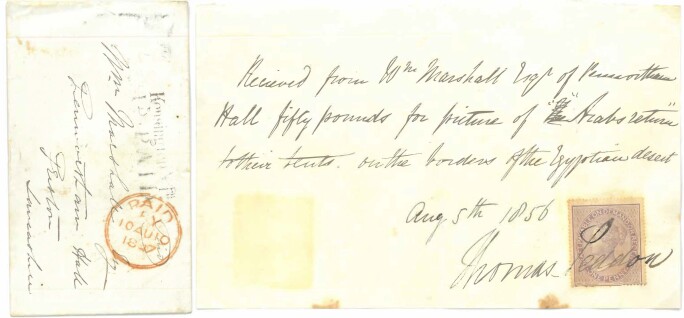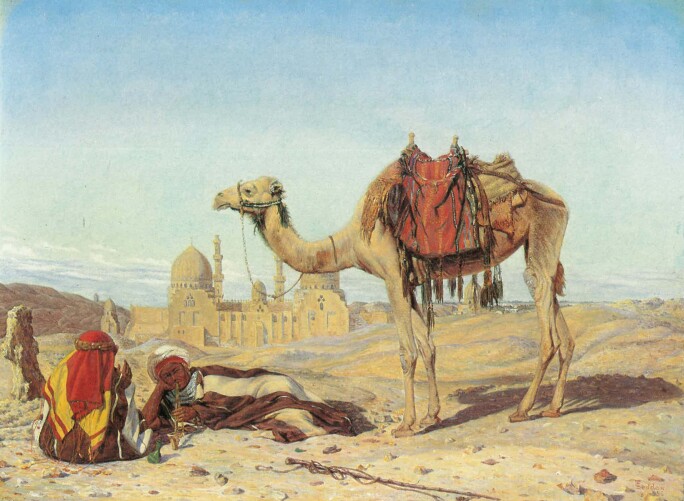Thomas Seddon’s work is extremely rare as tragically he died when he was young, but the small body of work that he produced in Egypt and the Holy Land shows the depth of his talent. Never offered for sale before, or exhibited, the present work is virtually unknown. It is referred to in a letter dated 20 August 1856 from the artist to his wife;
'I have had a very satisfactory letter from Mr Marshall about his picture. He says, 'I assure you that I was more than pleased. I shewed it to Frith and Egg, who showered praises on it. Frith said "Two years ago, I hung one of his pictures in the Academy; but there is great improvement here. Egg, come and look at this picture!" And they studied it for ten minutes. I put in a word, and Frith said, "Oh, there is merit here, which no one but an artist can appreciate." He particularly pointed out the shadow.'

When he heard that William Holman Hunt was planning a journey to the Holy Land, Seddon asked to join him – the trip being the first of two visits that Seddon would make to Egypt. Seddon arrived first, reaching Cairo on 8 December 1853, soon joined by another eminent artist, Edward Lear. On that first journey east, Seddon painted The Great Sphinx at the Pyramids of Giza (Ashmolean Museum, Oxford) but it was the spectacular Jerusalem and the Valley of Jehoshaphat from the Hill of Evil Counsel (Tate) which would be the most significant picture from that trip. In his biography of his brother, published in 1859, John Pollard Seddon recalled that; '[Seddon] received a commission for a picture of Arab life, from W. Marshall, Esq., of Preston, which he executed in the course of the summer' (ibid p. 151). This commission was for A Halted Caravan on the Borders of the Egyptian Desert, the present picture. We therefore know that it was painted in the summer of 1856 and the letter quoted above shows that it was with Mr Marshall by August. Seddon had married his fiancée Emmeline Burford in 1855 and although they had a one-year-old daughter, in the autumn of 1856 Seddon left for his second trip to Egypt encouraged by artist friends who felt that his destiny lay in painting scenes of the east. Seddon contracted dysentery whilst in Cairo and died on 23 November 1856.

Only one completed oil painting by Seddon has been sold at auction in the last twenty years - a scene from Greek mythology depicting the loyal wife of Odysseus, Penelope (Christie's, London, 10 December 2020, lot 25). A fascinating, but incomplete large oil painting Arabs at Prayer in the Desert (Christie's, London, 19 February 2003, lot 30) is comparable in subject to the present picture - it was sold from the famous Forbes Collection of Victorian pictures. The picture with which the present painting has most similarities, in terms of size, quality and subject is Dromedary and Arabs at the City of the Dead, Cairo, with the Tomb of Sultan El Barkook in the Background also painted in 1856 (private collection).